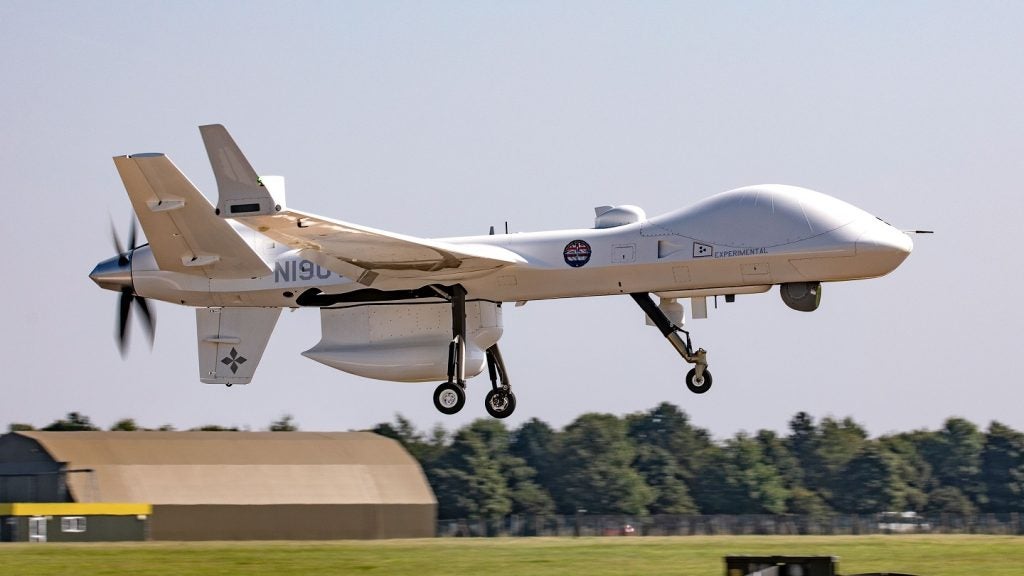As uncrewed aerial systems (UAS) proliferate in military services, Nato is working to establish a common framework for the operation of such technologies and determining a new standard for ‘sense-and-avoid’ capabilities in autonomous platforms.
According to a UK Royal Air Force (RAF) release published on 4 October, the recently held Nato Joint Capability Group for Unmanned Aircraft Systems (JCGUAS) conducted its autumn meeting in London, at which the group finalised a new sense-and-avoid standard for remotely piloted air vehicles (RPAS).
Attending the JCGUAS conference was over 150 delegates representing air, land, maritime, procurement, technology, and operational experts within Nato alliance, as well as the presence of industry partners and, for the first time, the Republic of Korea.
The RAF release stated that the JCGUAS’ focus was on the “standardisation of [UAS] within the alliance, as well as incorporating new and emerging technologies, including autonomy and artificial intelligence”.
Delivering a Nato-wide standard for sense-and-avoid capabilities was described as “important” by Ross McKenzie, Nato International Staff-UAS Officer and part of the JCGUAS leadership.
Also present was RAF Wing Commander Richard Long, head of the Protector RG Mk1 International Cooperative Programme, which is comprised of nations that have procured, in the process of procuring, or actively considering the acquisition of the MQ-9B RPAS – known as Protector RG Mk1 in the UK.
The JCGUAS is the source of technical and operational UAS information for Nato and addresses UAS issues including acquisition design, employment, capability demonstration, identification of a common approach to airspace management, operator training and standards, and doctrine including tactics/operational procedures, stated the RAF.
Is the MQ-9 already the Nato standard?
The MQ-9B RPAS, developed by US defence prime General Atomics Aeronautical Systems (GA-ASI), is the latest iteration of the MQ-series drones and draws heavy influence from its MQ-9A predecessor, which has been widely adopted by Nato members over the past two decades.
Among the most significant differences is the integration of a sense-and-avoid capability, which provides the host platform with the ability to operate in unsegregated airspace, effectively areas in which civilian and/or commercial traffic will pass through. Such airspace is by its nature a vastly more complex environment in which to navigate, with autonomous sense-and-avoid systems a necessity for an RPAS to be able to operate safely.
The UK has been among first nations to commit to the acquisition of the MQ-9B Protector, along with the United States, with other alliance members now confirmed, in the process of confirming, or else considering, the acquisition of the platform.
The MQ-9B, dubbed SkyGuardian by GA-ASI, is capable of the full spectrum of military operations, including intelligence, surveillance and reconnaissance, electronic warfare, maritime and sub-surface strike, ground attack, airborne early warning, among others. The system has been designed to meet Nato STANAG 4671 standard, which is an airworthiness requirement intended to permit military UAS to operate in other Nato members’ airspace.
Current or future operators of the MQ-9B SkyGuardian and/or its MQ-9A predecessor, include the US, UK, France, Belgium, Greece, Italy, the Netherlands, Poland, and Spain, as well as non-Nato countries such as Taiwan and the UAE.
Uniquely, Canada recently announced its intention to acquire hundreds of Hellfire missiles for the MQ-9B SkyGuardian, a platform which is not in its inventory, offering a glimpse into a potential future acquisition.









